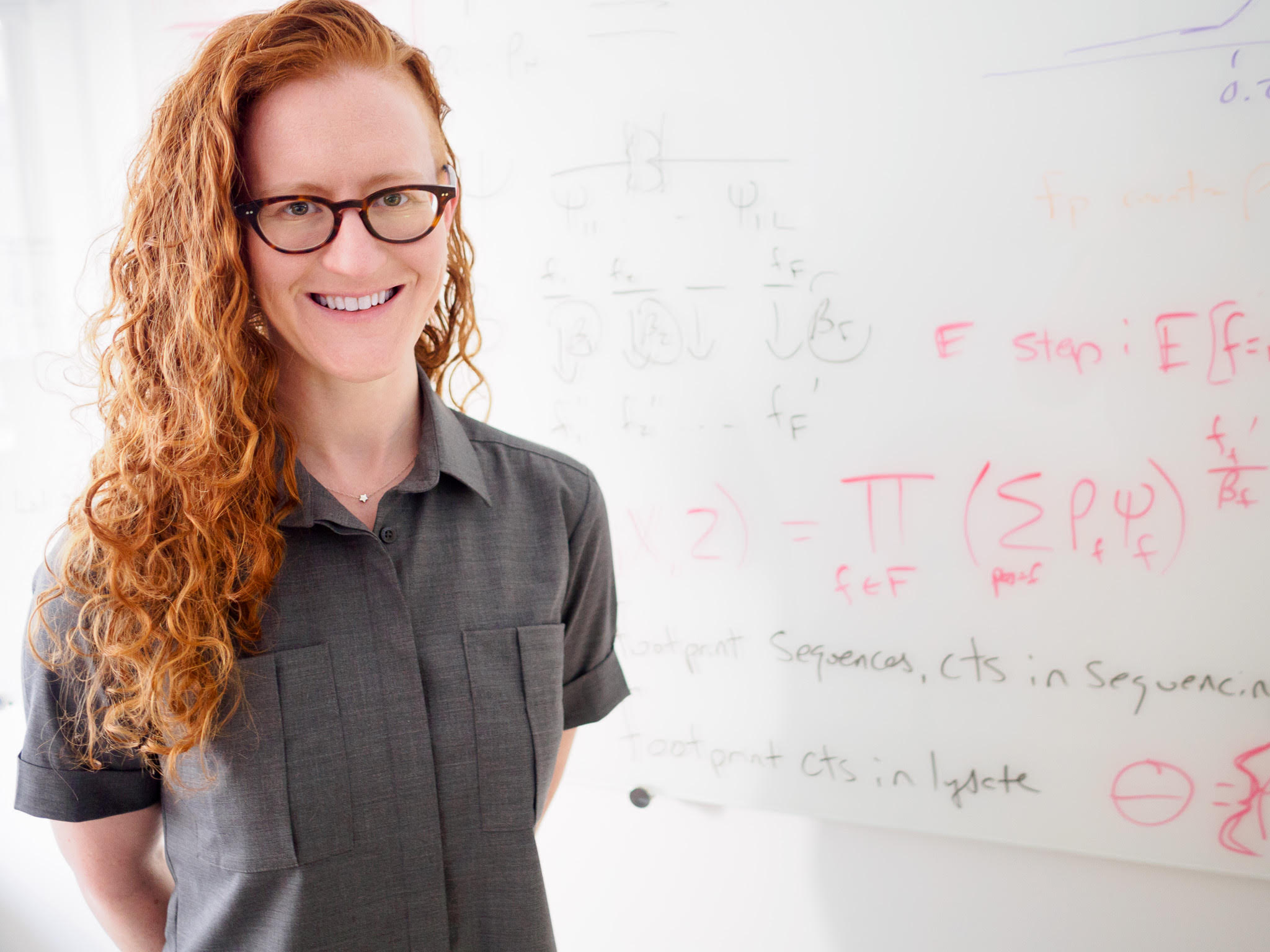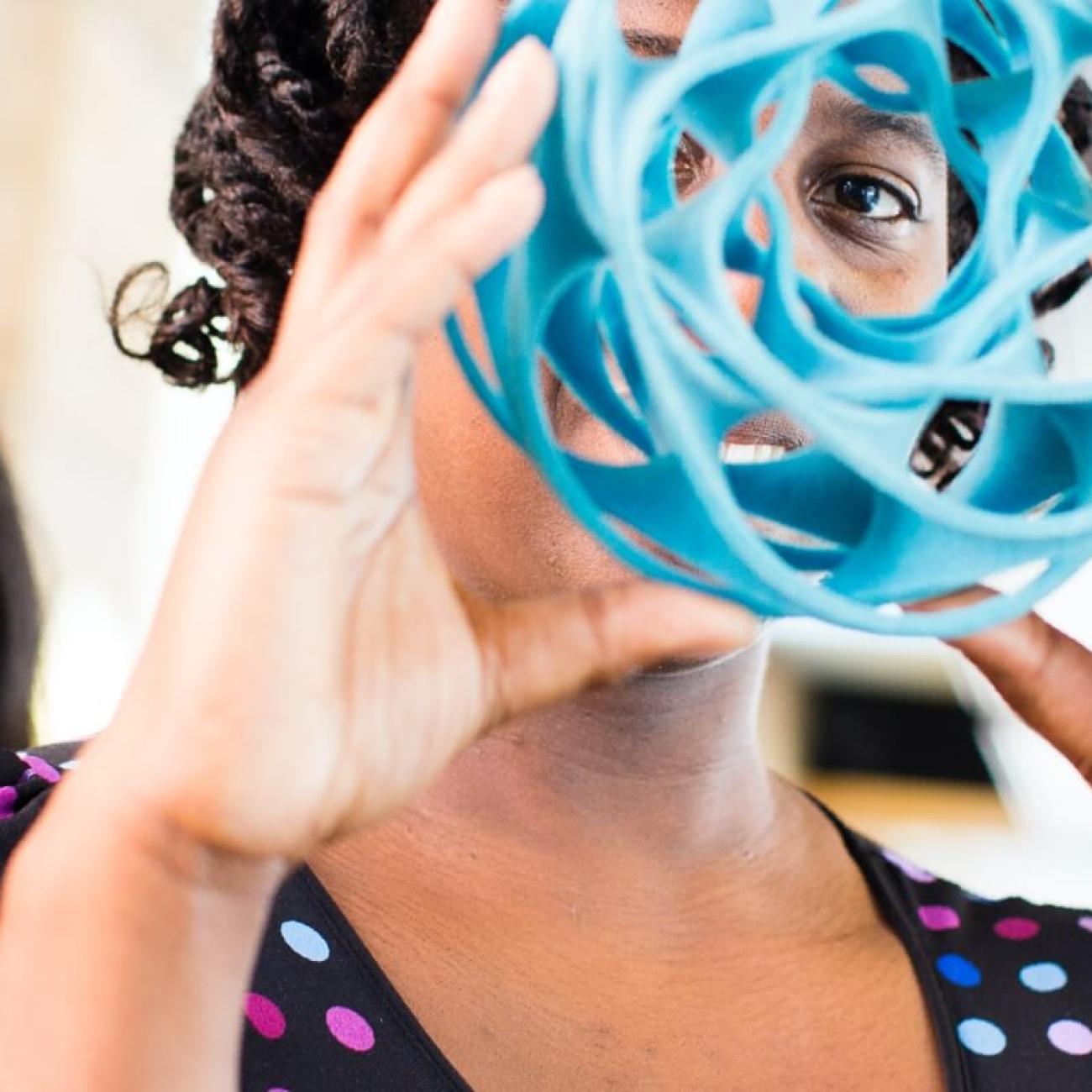
Liana Lareau
Professor Lareau uses computational and experimental methods to understand regulation of gene expression and to discover the regulatory information embedded in genome sequences. Her research group recently used neural networks to model the protein output of a gene based purely on its sequence, then applied this to design synthetic gene sequences for any desired level of expression.
“I began my career as a math undergraduate at MIT just as the human genome sequence was completed, the well-timed start of my ongoing fascination with genome information. That led me to do a PhD here at Berkeley, working with Steve Brenner to uncover the impact of alternative splicing on human gene expression.
As a postdoctoral fellow with Pat Brown at Stanford, I used high throughput RNA sequencing and computational methods to measure the movement of ribosomes along mRNAs. When Pat shut down his lab to start Impossible Foods, I spent a year at UC Santa Cruz working on a genome evolution project before moving back to Berkeley to start my own research group.
In my free time, I do Irish step dance and build industrial fire and light art.”
Professor Lareau was awarded the 2019 Shurl & Kay Curci Foundation (SKCF) Faculty Scholars Program. As part of the program, Lareau is leading a project utilizing genome-editing tools to decipher that matter in which “silent” mutations—DNA changes that do not alter the amino acid make-up of protein —lead to human disease, and to predict which silent mutations have big effects on human health.
Lareau was most recently awarded funding by the Laboratory of Genomics Research (LGR) for her COVID-19 research project. In partnership with genomic scientist Stacia Wyman, Professor Lareau is sequencing SARS-CoV-2 virus genomes from COVID-19 patients to trace the spread of the outbreak with their project titled, “Rapid, low-cost, high-throughput viral and metagenome sequencing of COVID-19 patient samples for outbreak surveillance.”

